I’m very passionate about the importance of postnatal physiotherapy care. Long time followers might remember me talking about this in-depth in my Mummy MOT review in 2018. I can’t think of any other circumstances where a body would go under as much damage and trauma as it does during pregnancy and childbirth where you get zero aftercare or rehab. This SHOULD be available for all women for free on the NHS but until it is, we, unfortunately, have to take our own postnatal physio care into our own hands. Today, I’m talking about these issues and am reviewing an online programme by Katrina Oakley (a certified postpartum corrective exercise and posture specialist) called Pelvic Floor Freedom that aims to assess and address pelvic floor dysfunction. If you have had kids and have ongoing issues like urinary incontinence/urgency, hip/pelvic pain, back pain or a heavy/dragging feeling in your vagina (aka symptoms of pelvic floor dysfunction) then you MUST read on…
Background to my own Pelvic floor dysfunction
I’ve had ongoing hip pain since the birth of my daughter 6 years ago that I just can not get resolved. I’ve seen multiple physios (including postnatal specialists), chiropractors, osteopaths etc and no one can get to the bottom of it. It’s very frustrating.
I’m stubborn and refuse to give up though so alongside the current physio (NHS) that I’m seeing, I’ve been doing my own research online. I’m not sure how I first came across Katrina Oakley but I think I joined her Facebook group – Diastasis Recti Workout Support with Katrina Oakley (currently has 36,000 members) when I was newly postpartum and wanted to check whether I had any diastasis recti.
However, what Katrina does is so much more than diastasis recti, it’s all things pelvic floor and core health and joining her group opened me up to a new world of knowledge and learning about my breathing, alignment, mobility, core and pelvic floor health. I started to suspect that my ongoing hip pain could be linked to pelvic floor dysfunction and core health.
I explained my particular symptoms to Katrina (mainly hip discomfort) and Katrina felt that her new Pelvic Floor Freedom program might benefit me. As the program is new Katrina was keen for an honest review so she could take the feedback to improve the program going forward so we agreed that I would review the program on my blog in exchange for access to it. I’ve worked on this review every day for over 2 months so it’s really as in depth a a review as you’ll ever get. I took it very seriously and completed the programme fully every day over the course of 2 months.
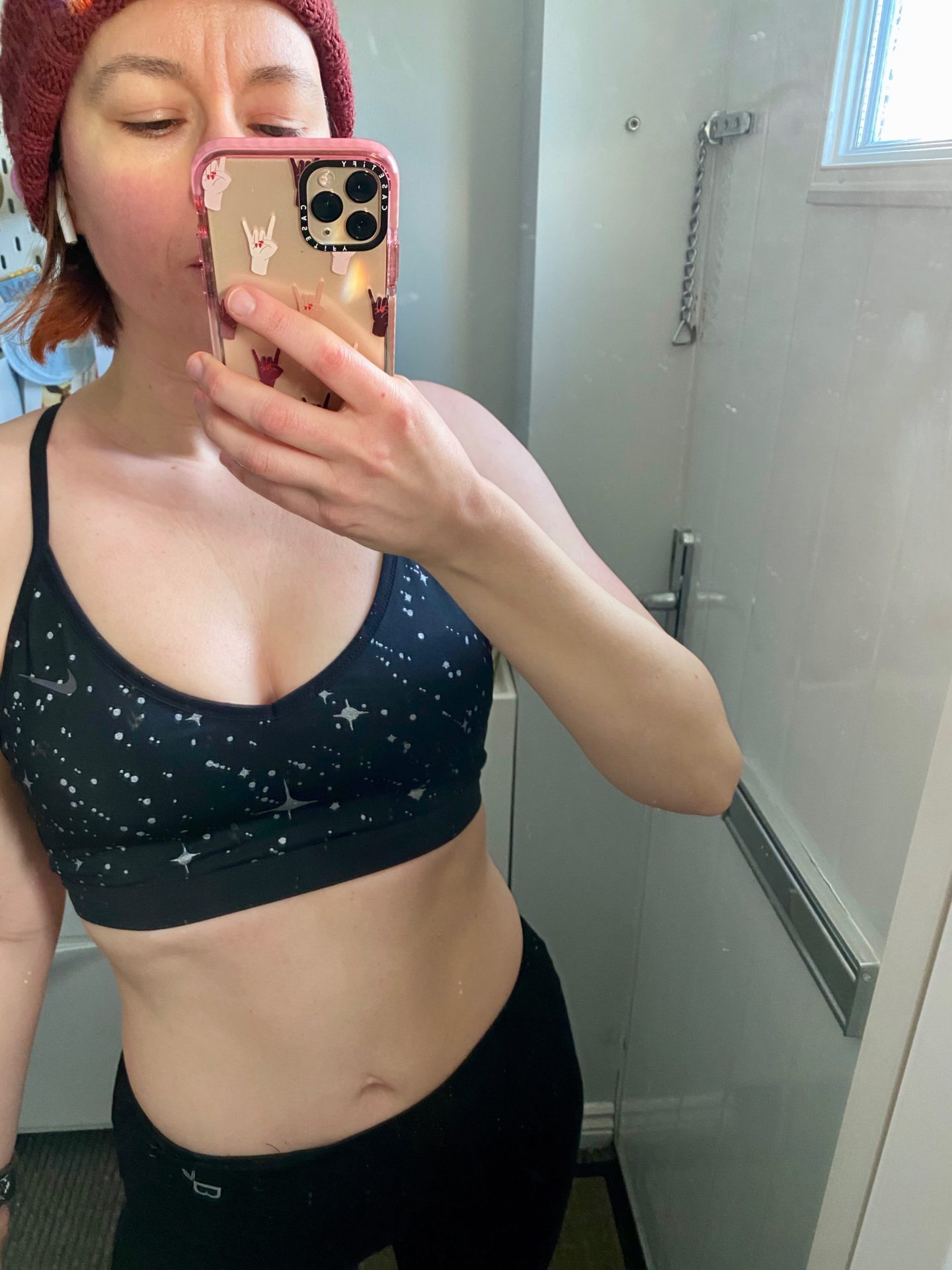
Katrina Oakley Pelvic Floor Freedom program review for women with pelvic floor dysfunction
Katrina Oakley’s Pelvic Floor Freedom program covers total body mobility (focusing on hip and thoracic region), glute strength and the pelvic floor. It also covers assessing your self and doing release/strengthening work if you need it. The pelvic floor workouts are specifically designed to work the coordination of the whole core, not just kegels. The program also focuses on teaching you to activate your glutes properly. Most people postpartum don’t actually use their glutes correctly this is because we often get into the habit of slinging our hips forward to balance our bumps during pregnancy. This weakens the glutes in the long term even if doing traditional glute exercises so this was one of the things that attracted me to this program.
The program has an initial stage which takes you through step by step assessments so you have a baseline to see where you are starting at. There are some initial stage exercises you can do whilst at this baseline stage but once you have assessed yourself there are 3 main stages to work through, stage 1, 2 and 3. Each stage has mobility, pelvic floor and glute ‘workouts’ and you build your own schedule with them based on what your assessment results were.
Alongside the main 3 stages of exercises, there are also other bonuses – 2 minute seated and standing exercises that you can dip into throughout your day during the program or afterwards. There is also advice and information about alignment, breathing, release work, scar massage and much more.
I found each day I would be doing anything from 10 minutes of exercises to 30 minutes, depending on how I structured my week. They aren’t the kind of workouts that you’ll get hot and sweaty for though so you can piece them throughout your day whenever you get a spare 10-15 minutes.
The program took me around 2 months to complete. It may take you a little less or a little longer depending on your body’s particular requirements.
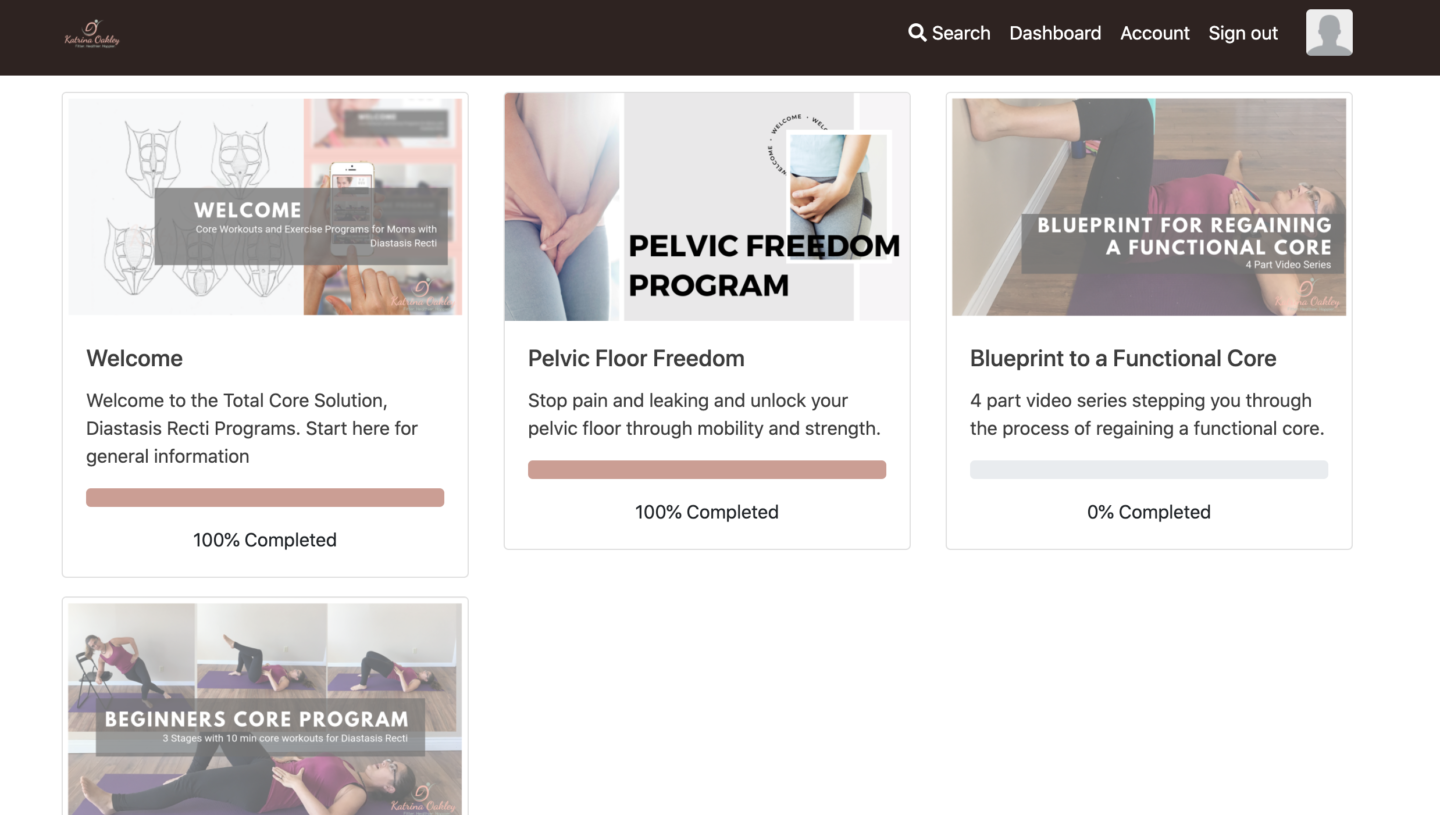
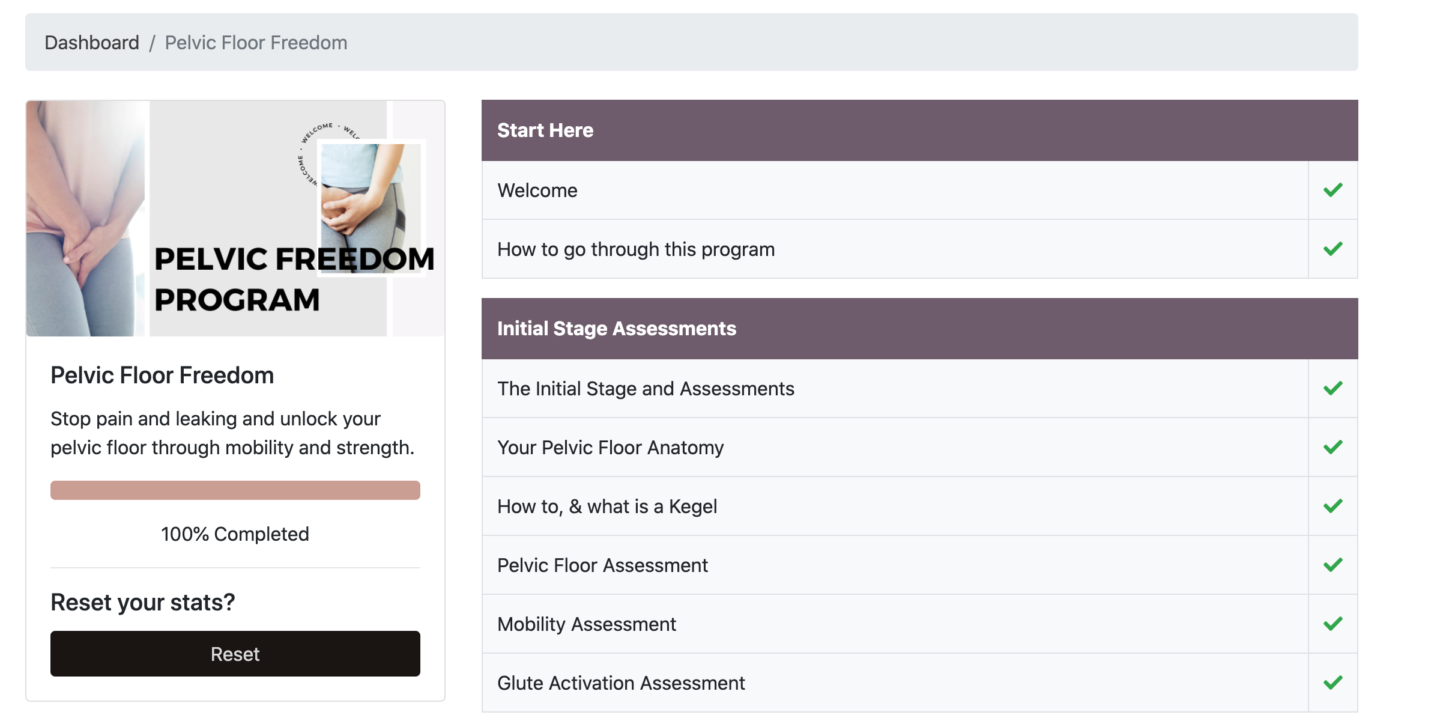

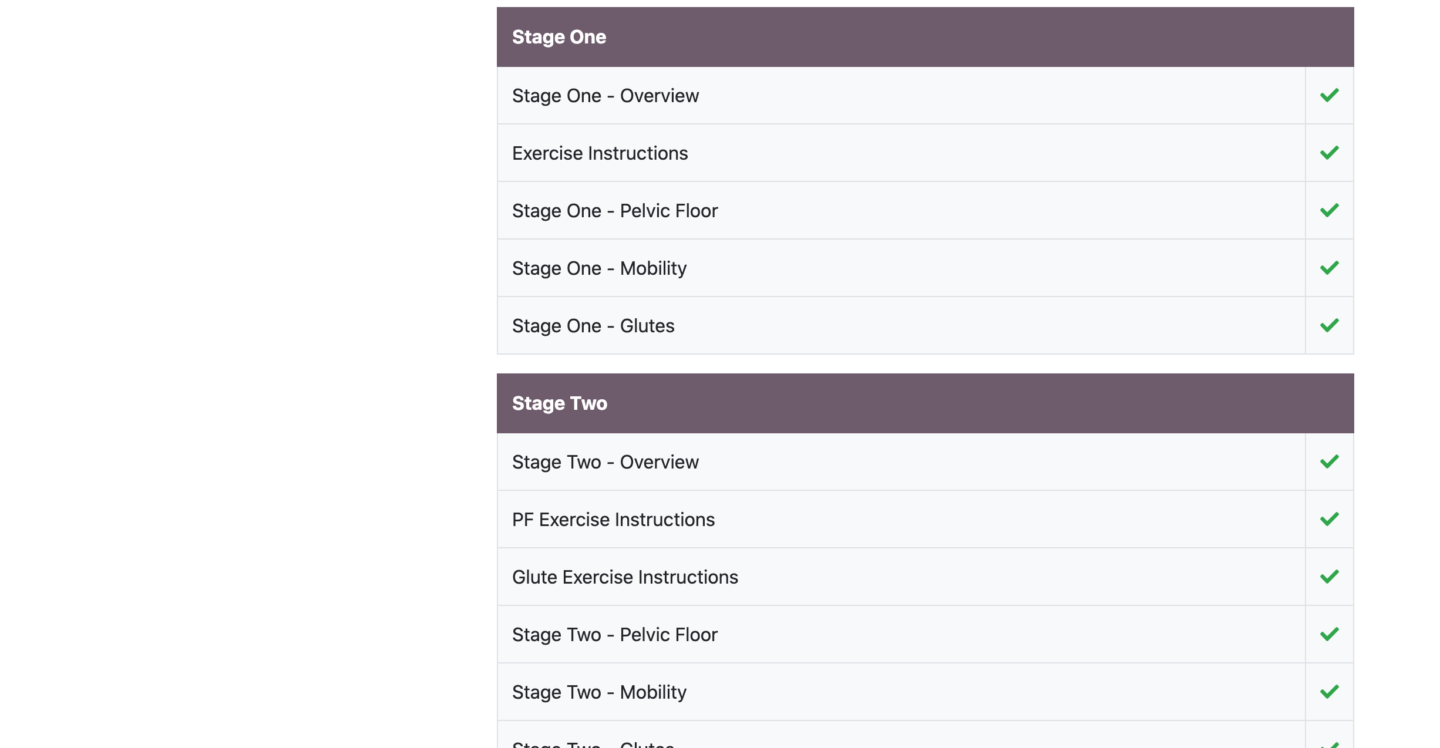
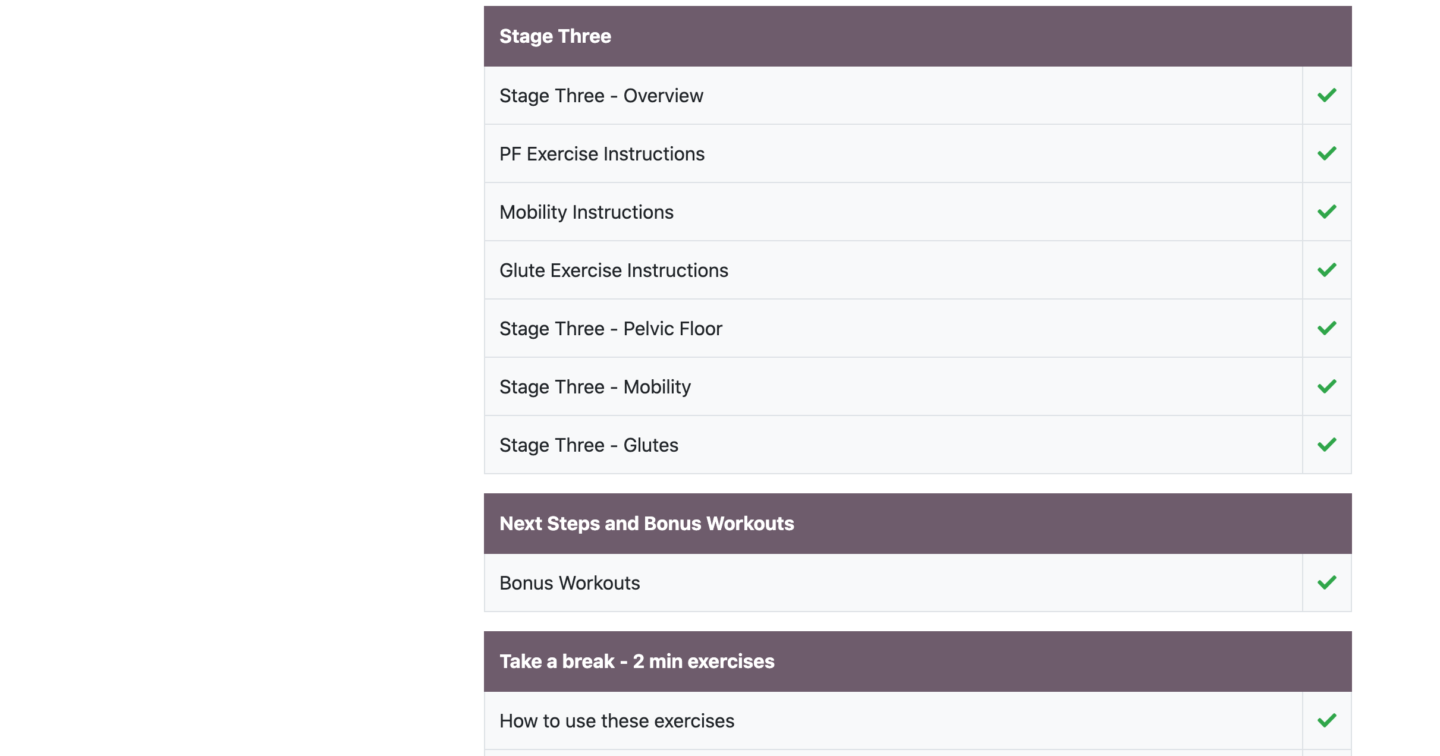
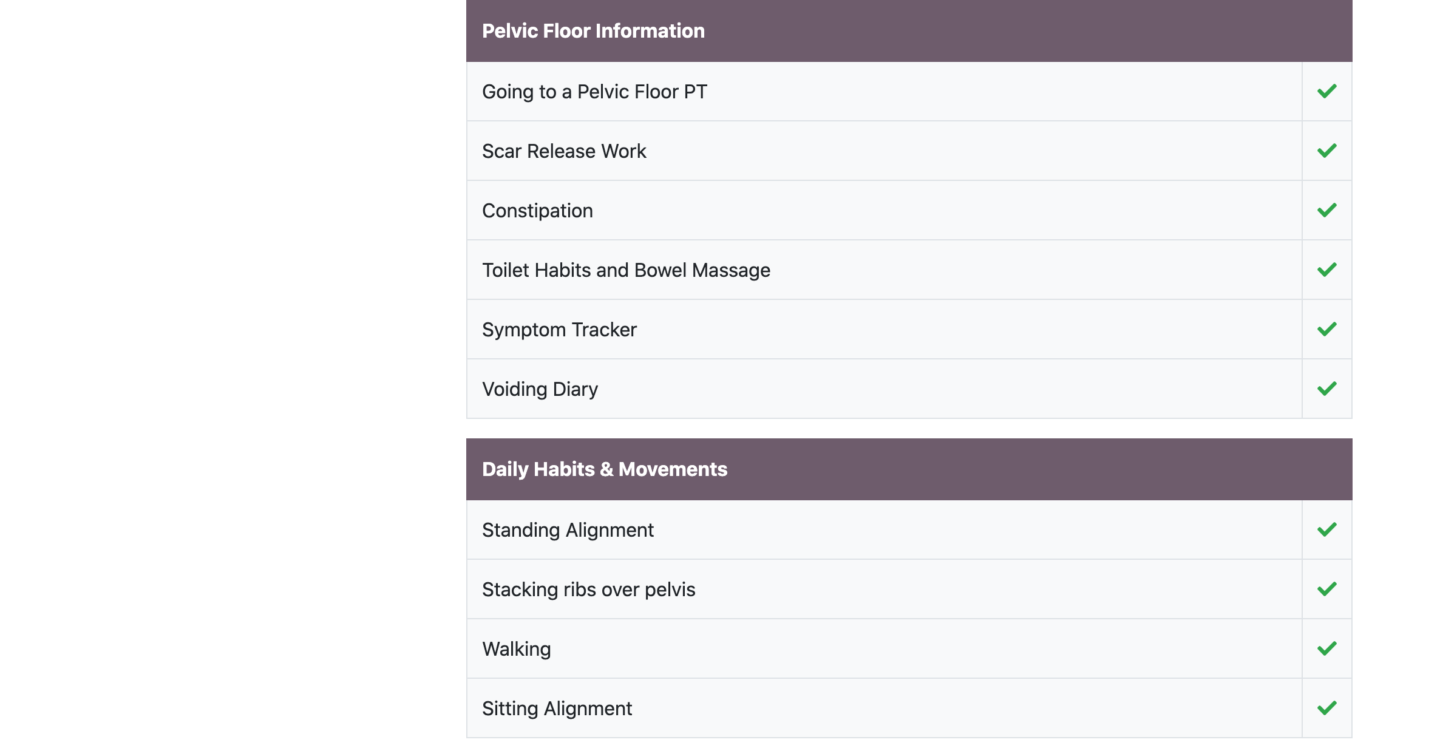
Is your pelvic floor dysfunction too tight or too loose?
Women are often encouraged to strengthen their pelvic floors by doing kegels, kegels and more kegels. However, this is problematic as actually, it is a misconception that most women who have pelvic floor issues have them because their pelvic floors are weak and loose. Actually, more women have pelvic floor issues because their pelvic floors are hypertonic – over tight. But the crux of it is, you need to know what it is before you jump in and start doing strengthening exercises when you actually might need to learn how to relax your pelvic floor first. It’s not as simple as just do Kegels and actually often that can do more harm than good. For me personally, I was/am in the latter camp with a pelvic floor that’s too tight, or hypertonic and that was causing me issues.
See a pelvic floor physiotherapist for your pelvic floor dysfunction as well if you can
If you can’t get to a postnatal physio then this program will help you figure out whether your pelvic floor is too loose or too tight. I would highly recommend going to a pelvic floor specialist if you can though to corroborate your findings. At one point I was concerned that I might have some prolapse but the pelvic floor physio said I had none at all. The program combined with a pelvic floor physio is ideal for treating your pelvic floor dysfunction. They complement each other for better results but of course you can also do either one without the other.
How much does Katrina Oakley’s Pelvic Floor Freedom Program cost and is it worth it?
Access to the Pelvic Floor Freedom Program costs $127 (around £92 at the time of writing this). Whether it is worth it is quite a subjective question. It is an expensive program. Centr that I use for fitness is about £95 a year and you do get a more for your money for that – you can read my Centr review here. In addition, I do feel it’s worthwhile to also see a face to face (or face to fanny lol) pelvic floor physio as well (who tend to cost around £70 for a first session and £40 for follow up sessions). If I was to put a price on the program that felt really good value for money I would say around £75-80 so it’s not too far off. It’s cheaper than many other pelvic floor programs I have seen online.
It’s worth noting that I often find that postnatal physios don’t give you enough exercises or a full program to resolve issues in comparison to what I did on Katrina’s program which was much more comprehensive and hollistic.
Most importantly, going through the program myself and being in Katrina’s groups has given me a wealth of knowledge about my own body that I didn’t have before that you just can’t put a price on. And if you can’t see a physio in real life then I would go so far as to say that a program like this is absolutely essential, especially for new mams.
if someone in your life wants to get you a ‘push present’ then ask for this, or vouchers for a postnatal physio because trust me, it’s the best gift you can give yourself.
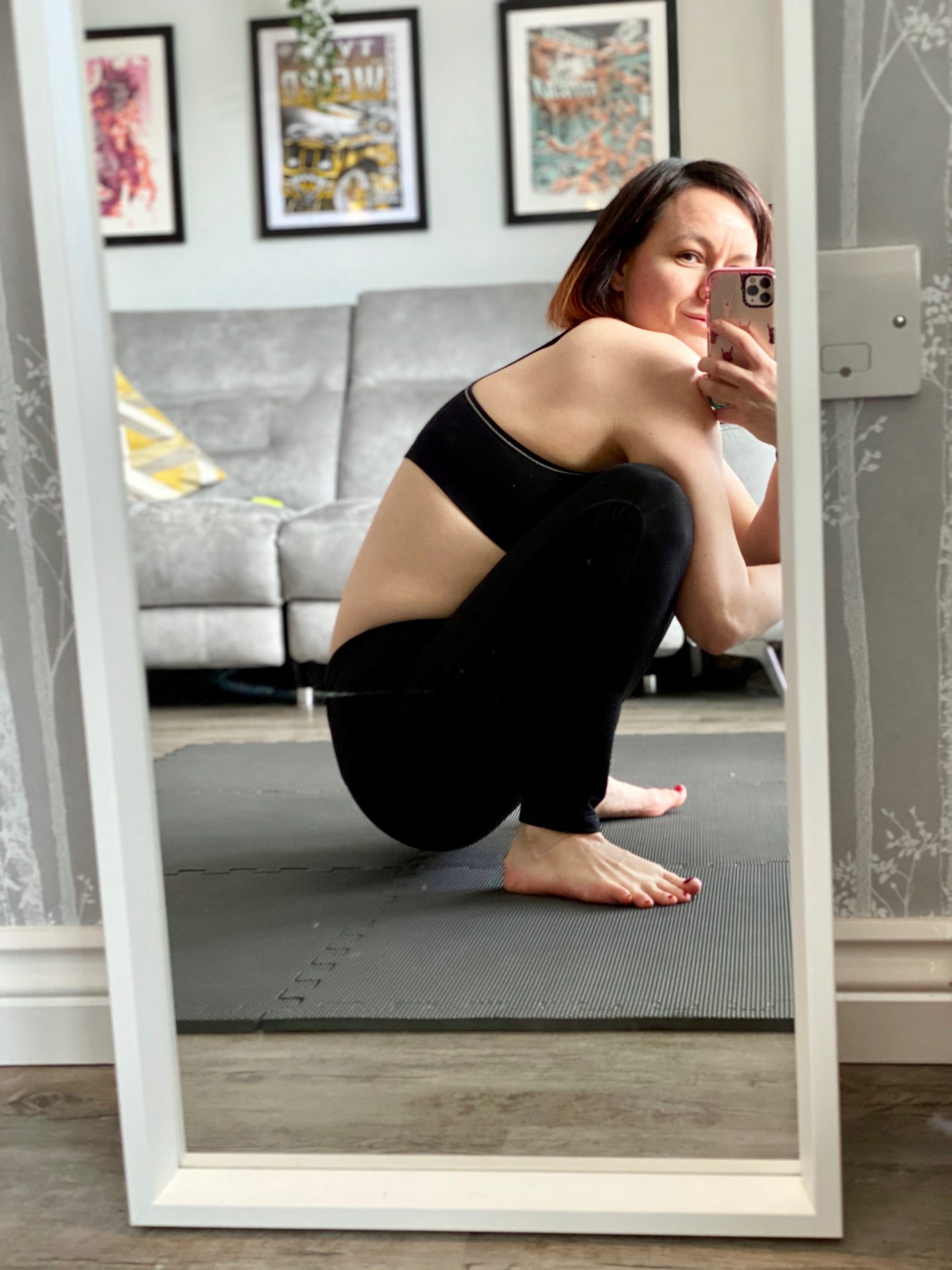
Things that I loved about the Katrina Oakley Pelvic Floor Program
- That the program has a self-assessment to start and then the exercises are tailored to your specific needs. I think this has much more value than just a general one size fits all program which I’ve seen elsewhere.
- It empowers you to get to know your body and understand it better so you can fix yourself. That kind of knowledge means that you can use it throughout your life which gives it value beyond the programme itself.
- It’s a superb SAFE reintroduction to exercise for women who have had time out due to pregnancy, birth and the fourth trimester. So many women just jump back to doing sit-ups and crunches – just no!
- It’s not too time-consuming. The ‘workouts’ can be done in 10-15 minutes mostly so you can slot them in throughout the day whenever you get the chance. They aren’t the kind of workouts that are going to get you hot and sweaty so you don’t need to schedule a shower for after or even change your clothes most of the time.
- The mobility work is such a pleasure because it really opens up your body.
- Katrina – she is an absolute font of knowledge and being able to ask her questions and directly and gain reassurance and guidance from her is invaluable. Most importantly she has been there and she truly gets it. She must spend all day online answering questions and giving advice. She was incredibly generous with her time with me. She makes all the difference to this programme.
- Katrina’s groups – even just being a member who ‘lurks’ in these groups will teach you a lot just learning from other women who have been there or are going through it at the moment. It’s lots of women sharing photos and advice and asking questions which is invaluable.
- The app to go alongside the website makes it much more accessible to just pop in and do the exercises at a moments notice using your phone, anywhere that you are.
- Everything has a video to explain it which is so useful. I found I would watch the workout videos a few times until I knew what I was doing and then I would use the print outs of the exercises and do them whilst watching a TV show – I was deep into Gilmore Girls when doing lots of these lol.
- It definitely taught me more about the pelvic floor and my anatomy – how the hell have I got to 37 without knowing this stuff? It should be taught in school if you ask me.
- The information about scar release work is so helpful to me as a woman who has scarring from both a category 1 emergency c section and a vaginal birth with episiotomy.
- The programme doesn’t just teach you about pelvic floor but also about how alignment (both seated and standing) plays into this and how to do both correctly.
Things I think the Katrina Oakley Pelvic Floor Program could improve on (that I’ve passed on to Katrina)
I don’t really have any major criticisms of the program. It’s a well thought out and well-rounded programme. That’s saying something as I’m generally quite a critical person (as I’m sure you have noticed over the years). I have some minor practical suggestions for improvements that I have passed on to Katrina to look into implementing.
- It would be great to have a print out of the 2 minute exercises to go alongside the videos so that you have a reminder of them for later without having to watch all of the videos again each time.
- At the end of stages 1 and 2 there was a ‘move on if …checklist’ and next steps but at the end of the programme didn’t have this and I was unsure when I should finish. It didn’t say how long I should do it for or when I should move on or next steps for when you do move on.
- Some of the workouts have a pdf print out which is really helpful but none of stage 3 had this, it would be an excellent addition to include those.
- When you click back on the app it takes you to start of the app, not to the last section you were on. Makes navigating a bit annoying at times. Still super grateful to just have the app though as it was handy.
- Some of the workouts, for example, the second stage of the illiacus pullbacks have so many different component parts to them to do them right that it’s easy to do them wrong due to positioning
- You can’t tick off what you’ve completed on the app but can on the website. It’s really nice to see your progress by ticking sections off.
- I felt like some of the assessments don’t tell you what your results meant. For example, so I’ve got less mobility here or more weakness there but what are the common causes of that to explore it further?
- The leave feedback button on the app was over the top of some of the other site buttons.
- It would help if all of the workout videos came with a sheet with the exercises also written out (some did and some didn’t) – even just the name and an image, so you can do them more quickly once you’ve watched the videos a few times.
Equipment I bought for the pelvic floor programme
Now you could get away with doing this programme without buying anything however, I did buy some equipment that helped me with the programme. My top buy was a small soft pilates ball that is used to squeeze during a lot of of the pelvic floor exercises. I bought this one from Amazon (affiliate link):
You also need a long stick like a broomstick for a few of the glute and mobility exercises. I didn’t have a decent one so I got this one from Amazon (affiliate link) or you can pick one up in a pound shop.
A fair amount of the exercises require a yoga block, I already had some but you can get away with using folded towels or cushions in their place at a push. Yoga blocks are a great tool to have regardless though so I feel they are worth the investment.
For the glute sections, you will be encouraged to roll out your glutes and hip flexors with either a foam roller or a massage ball. Personally, I found the massage ball more helpful than the foam roller but either will work. I also personally used my massage gun as well as an extra tool as my glutes were full of tight knots that needed working out. The programme didn’t recommend a massage gun but the one below has been an absolute game-changer for me. I’m going to continue rolling my glutes at least once a week going forward so these were a great investment for me, aside from the program. If you have to get just one I’d say the massage ball. I’ve linked all below.
I also bought an exercise ball as I didn’t have one and they are useful for being able to get used to feeling your pelvic floor during many of the exercises. They are also great for your pelvic floor health to sit on – I often alternate between my desk chair and exercise ball during my workday. Moving around on it, bouncing on it, doing circles and side to sides are great for your mobility, pelvic floor health and alignment/posture. I bought this one from Amazon (affiliate link):
As one of my issues was an overtight pelvic floor I also bought the Intimate Rose Pelvic Floor Wand to help me with internal massage to loosen it off. However, honestly I found it quite tricky to use and in the end preferred to use my fingers.
I also bought a baseball to do external pelvic floor release work but as I was happy to do internal release work I haven’t actually used this yet. It’s helpful if you need to do release work but get your period and then you can continue doing external release work without getting messy.
Towards the end of the program, one of the glute exercises requires a resistance loop band. I’m sure you could do the exercise without it but the resistance does make it more effective. I already had ones I could use for this but regardless I think resistance bands are an excellent tool to invest in. These are the ones I have.
Please note that you don’t have to buy the equipment, you could make do and adapt. I like to invest in this stuff anyway to have equipment at home rather than paying to go to the gym.
What I learned
I learned so much, too much to put in this review to be honest. My pelvic floor was hypertonic (which I already strongly suspected), my glutes were full of knots, my left Transverse Abdonmis muscles (TVAs) aren’t engaging as much as my right suggesting that I have a slight anterior tilt on my left hip. My left glutes are weaker than my right. My hamstrings and calves are very tight. My Tensor fascia latae muscles (TFL) were often taking over from my inner thighs in exercises and I’ve now taught them not to do that/do that less. Hell, I don’t even think I knew what TVA or TFLs were before doing this program. I could be better aligned and breathing better. Plenty to work on basically.
My results
I learned how to relax my pelvic floor on cue. Which is no mean feat as I really struggled to relax it when starting the program. I’d have to tighten and then relax to get that mind muscle connection whereas now I can relax it whenever and more quickly. I now realise when I’m tightening my pelvic floor – I’ve realised I’ve been involuntarily tightening my pelvic floor and glutes when stressed or angry. No wonder it was so tight lol. I felt like I had more mobility after the programme and less tightness and knots in my glutes.
The biggest improvement for me is the increase in knowledge and awareness of my body. It’s been a few weeks since I finished the programme and started back to my regular workouts and I’m aware of some retightening. I know what that feels like now and importantly I know exactly what I can do to help myself. There are so many bad habits that I had that I’m now aware of, from the simplest things like how I sit or stand but changing these things will have a huge impact long term due to how much time you spend doing them day in and day out.
My hip discomfort hasn’t gone but I feel like I’m a step closer on the path towards resolving it.
Who would benefit from it?
Anyone with any pelvic floor dysfunction could benefit from it, however it will be especially beneficial in that fourth trimester. It’s ideal for those who are newly postpartum and wanting to start getting back into exercise and healing their pelvic floor safely.
As I went to doing the programme from doing an advanced exercise program (Centr app) it felt excruciating to me to slow down in this way when I’m used to going hard and fast. If you are just getting back into exercise though it would be the perfect slow start you need to move on to more advanced programs with a strong and balanced foundation. I’ll be telling all my friends who have had babies to do this program as part of their recovery alongside getting something like a Mummy MOT.
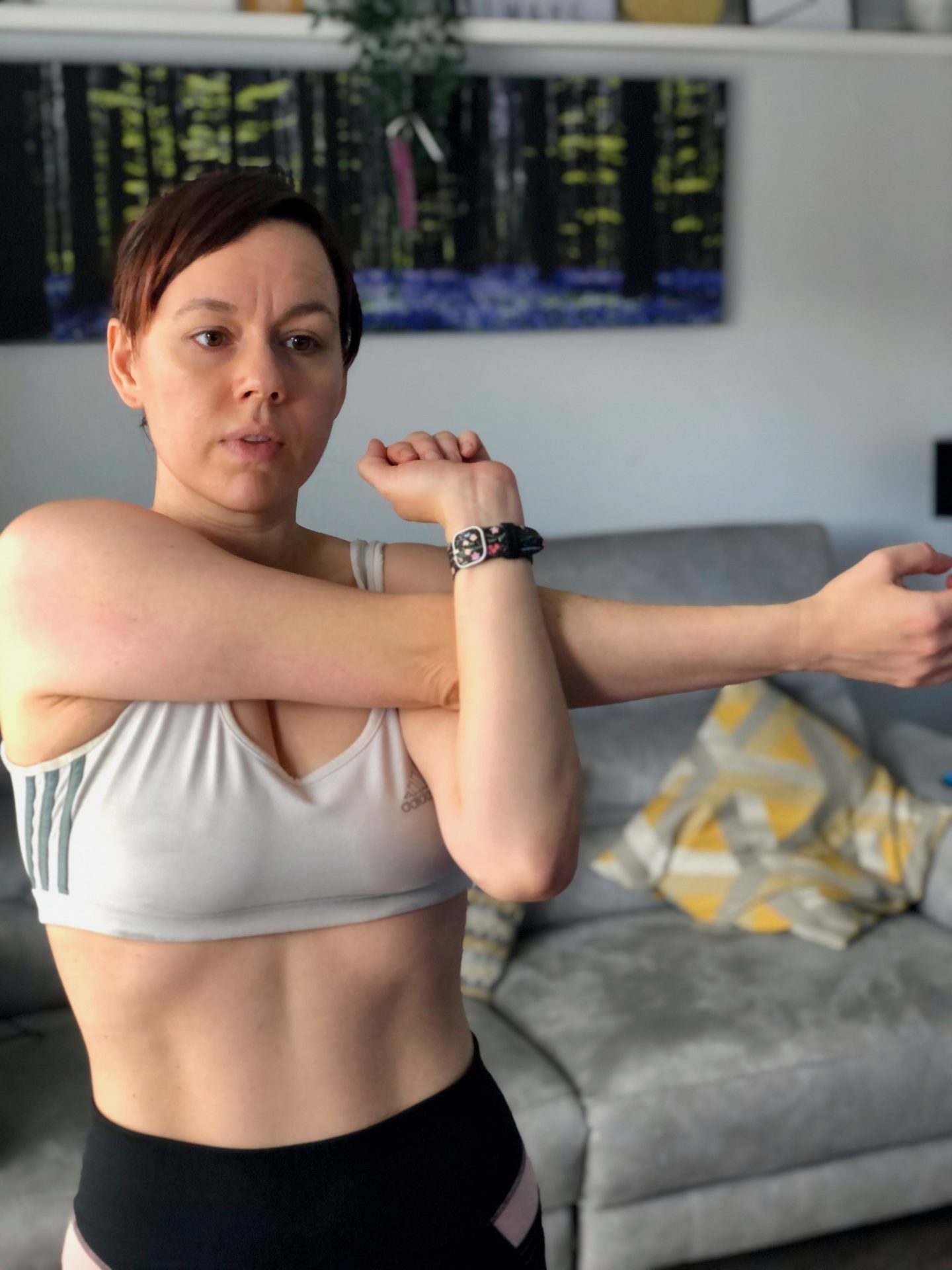
My tips for simple things that you can do now if you have pelvic floor dysfunction
- Sitting on an exercise ball is excellent for your pelvic floor health. Roll it around in circles, do pelvic tilts, bounce on it. Use it as an office chair or watch TV on one. It helps you sit in optimal positioning too. Its also great for feedback too – if you do your kegels on them you should be able to feel your pelvic floor relax onto the ball. I bought this exercise ball (affiliate link).
- Happy baby and child’s pose are my top 2 poses for helping to relax the mind, body and pelvic floor. I do them both several times a day.
- If you are going to the toilet ‘just in case’ or too frequently then you need to stop doing that and go just when you truly need to.
- Pelvic floor health maintenance should be like teeth maintenance. You brush your teeth twice a day to keep them healthy. It’s part of your routine. Make pelvic floor maintenance part of your daily routine too. When you aren’t peeing your pants when you are 80 you’ll thank me.
- It’s better to do small amounts regularly that are sustainable than bigger amounts infrequently.
Other places you can go for pelvic floor dysfunction support:
- Katrina Oakley has other programmes as well (for example core and diastasis recti programmes) and often runs free challenges and courses to get you started so please join her groups or sign up to her mailing list to check those out. She has so many helpful videos on her YouTube channel that is a fantastic starting place and will give you a flavour of what to expect from her programmes.
- I’ve been using the NHS app Squeezy (around £3). You can do a voiding diary where you track what you drink and what you pee so you can see if you have any ‘bad habits’ you need to work on there. You can have it set up to do pelvic floor exercises and it sends you reminders. Mine is currently set to prompt me to do 9 long hold and 10 short squeezes at 10am and 8pm every day.
- MUTU (affiliate link) is an NHS approved 12 week programme that many women swear by, including the Catherine, the Duchess of Cambridge
On Instagram:
- Katrina is on Instagram as @Corefitnessformoms
- Hannah Bower seems to have a great core guide but I’ve not personally tried it
- Pelvic Health and Rehab Center are good to follow for general advice
- Nancy Anderson Fit seems to have some good courses that offer one on one support through again these aren’t ones I have tried personally
- Local postnatal pelvic floor physios in North East England that I’d recommend are Lindsey Graham Physiotherapy and Roseanna Grace Physiotherapy
If you think you have pelvic floor dysfunction, I hope you have found this review helpful. If there is anything I didn’t cover and you have any further questions please let me know in the comments and I’ll do my best to answer there.
If you liked this post you might also like:
- Best yoga mats for carpet
- How to make exercise an unbreakable habit
- Mummy MOT review
- Tips for getting into a great fitness routine
- Centr review – Chris Hemsworth’s fitness app
- Dealing with a ‘threenager’
- My ultimate guide to breastfeeding
If you have enjoyed this post or found it useful, here are some quick and easy ways that you can support Nomipalony or say thanks:
- Share this post with your friends
- Follow Nomipalony on Facebook, X, Instagram, Pinterest, YouTube or Tik Tok
- Pop over to my Amazon Storefront to see what products I have been buying and loving from there recently, including my health and fitness products list.
- Click here to buy me a virtual cuppa
- Sign up to my mailing list
- Women can join my feminist Facebook group – the Nomipalony Freehouse
Disclaimer: This is post contains some gifted items. This post also contains affiliate links. If you buy an item through an affiliate link you won’t pay any more for that item but I will receive a small referral fee. As an Amazon Associate, I earn from qualifying purchases. For my full disclosure please see my about page.

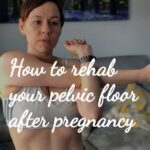











![Gritin Resistance Bands, [Set of 5] Skin-Friendly Resistance Fitness Exercise](https://m.media-amazon.com/images/I/51oGOTZi6sL._SL500_.jpg)